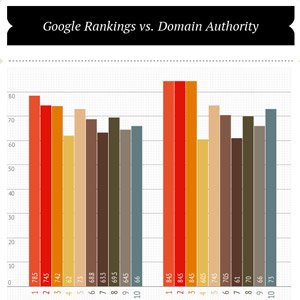It’s been more than a year since Google first introduced Penguin Algorithm Update. How has Google search result changed? Did Google Penguin kill off link spam as it promised? What makes site rank high on Google today (and what will cause penalty)? How do SEOs adapt to the new post-Penguin Google?
Last month (April), I took a deep dive into 280+ before- and after-Penguin results to search for some answers.
Post-Penguin Google Analysis infographic
The infographic below displays some of my key findings, you can check out my complete case study here.
Adapting To The New Post-Penguin Google
The purpose of my case study is to understand the new Post-Penguin Google and fine-tune my personal SEO strategy in future. Here are some of my tips on adapting the Google’s new pet.
Link Quality Is More Important Than Quantity
From now on, your primary SEO focus is to build a domain trusted by Google instead of back links.
In general, SEO thinks that all Google Penguin do is to catch link spam. However, things seemed a little different when I took a closer look. Penguin hurts sites with low Domain Authority the most and tends to be more forgiving to sites that run on a trusted domain. In other words, if a site that relies on low quality links were caught buying links, the punishment will be harsh; whereas many big names and well-established websites with lots of quality back links are able to escape with their questionable link building practices.
If I could only offer one tip for your future SEO campaign, it would be “Build Trust, Not Link‘. When you obtain a link (be it a link trade or a guest post link), ask yourself: Does Google trust this website? What will Google think of my site if I get a link from this website? A back link from an authoritative website is worth hundreds of low quality links.
Link Diversification
Diversify everything you can in regards to back links. Yes, I mean everything. Googles spokes person has repeatedly mentioned that the search engine wants to see a natural link profile. “Less SEO is better SEO”, as they said.
Admittedly, less SEO is not the best SEO tactic we see in the real world (com’on, you know how these PR people like to tweak their words and confuse us, right?). But then again, let’s sit in Google’s shoes for a while and ask ourselves: How does a *natural* link profile look? Isn’t the answer obvious?: Variety!
If you are using only one or two link building methods, change that now. In case you are focusing on the same set of anchor texts for the past 12 months, change that now. In case you only buy links from websites with high Google PR only, change that now. The idea, again, is to diversify everything regarding links – use different anchor texts, obtain links from different types of web pages with different TLDs, place your links at different locations (footer, sidebar, homepage, inner pages, header, comment section, in-content, etc), build links from directories and wikis and social networks (if you haven’t try it before).
Starting Over Again
If you’re not too concerned with branding, making a new site and starting over again might be the better option. According to a poll result at SE Round Table, more than 90% of the voters said that they have not recover from Penguin one year later. Webmasters who had that Penguin’s slap one year ago are still feeling the pain one year later. I have seen companies spend tens of thousands (if not millions) to build new content and back links to revive a Penguin-penalized site and get nothing back in return.
